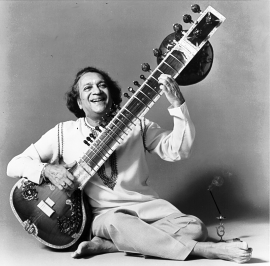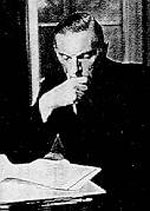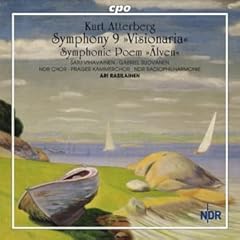
World music is a current fixation of classical music, with many especially younger classical musicians signing with world music/classical fusion groups. But before there was the Silk Road, and before the Kronos Quartet was performing
Near- and Far- eastern inspired music, there was a (now little-known) release by Angel: Ravi Shankar's
Concerto for Sitar and Orchestra.
I chose my words carefully when I said "current fixation," because the focus on world music is certainly not "recent," nor would I say it's any more prevalent now than it has been in times past. Since the late 19th century, composers have been reaching deep into their ethnic and folk traditions to lift themes, effects, rhythms, and tonal/harmonic structures. Most obviously Bartók, Kodaly, Janáček, MacDowell, Milhaud, Villa-Lobos, Khachaturian, Thomson, de Falla, and so many others, confronted ethnic and folk music, and worked it into the classical idiom (even Stravinski made a study of folk music before penning the Rite,
Весна священная.) And it is a trend that continues to this day in composers like Chen Yi, Takashi Yoshimatsu, Pēteris Vasks, Erkki-Sven Tüür, and Einojuhani Rautavaara (a short selection from a long list). Some nice labels to try for this sort of thing include Nimbus, CRI, and ECM New Series. Nonesuch and Naxos probably have a few choice items as well.
The Angel LP of Shankar performing his own concerto (with none other than André Previn and the London Symphony) is indicative, I think, of a newer approach. And it's this new approach to an old idea that strikes me as characteristic of the recent movement. Shankar wrote: "
The listener will not find much of the harmony, counterpoint or sound patterns he is used to, and which form the basis of Western classical music ... because they are elements which, if emphasized, can spoil or even destroy the Rāga Bhāva."

The orchestration, which isn't so much orchestration as it is orchestral accompaniment, is sparse and quite unimportant, particularly in the first movement. Following a brief introduction, establishing D major, strums of the Harp introduce the Sitar, which spends most of its time playing alone. When it is accompanied, it's either by an orchestral drone, or string plucks on either the tonic or the dominant, notes which are granted significant importance in Indian Rāgas as well as in Western music. The second movement has a longer orchestral introduction, at a moderate tempo, which surges forward when the Sitar twangs a dextrous and virtuosic second Rāga, which is really quite nice. The third movement begins with a kind of Summer-Pastoral theme that could pass for some early student works of Bax or Moeran. The Sitar strums out its entrance, and begins a kind of spinning dance, punctuated by its primary accompaniment: Bongo Drums, occasionally echoed by the orchestra or backed on the tonic by Orchestral drone. This short movement is full of rhythmic drive and lyrical Indian variations on the main Rāga. The final movement finally brings a brass instrument to the fore: the Horn sets the initial mood and key. And in this movement the Sitar has a kind of broken dialogue with the orchestra, exchanging lines: the raga deviates here and there, and in the end it's brought back, ending with a somewhat unresolved Sitar strum. The recording has been re-released on EMI, and can be found
here. (Ravi Shankar, aside from being a composer, is a tremendous musician, and the CD is probably worth buying for the musicality and virtuosity of its performances).
It should come as no surprise that a composer reconciling ethnic music with the western idiom should choose to emphasize, of the two, the one that comes most naturally to him. But, the trend in the fusion of Western and World music seems now to be one in which, as in this Sitar concerto, Western idiom bows out. The liner notes calls this "West adapting to East," which strikes me as missing the point: What we have, here, is thoroughly Indian music played by Sitar, winds, and strings. Does this make it a bad piece of music? No. It's quite nice, and the orchestra does enhance the voice of the Sitar. But what it
isn't is a true confrontation, it's
not East meeting West as some musicians or composers might lead you to believe. And this hints at what I think is the greatest fallacy of the new approach to bringing World Music into the fold of Classical: the notion that ethnic music played on or with western instruments represents a fusion of musical ideas. And I suppose it does, insofar as playing Mozart's
Turkish Rondo on
electric guitar makes the
Rondo "Modern Music."
I guess I just stubbornly adhere to the notion that the confrontation of ideas ought to produce something new, different, and perhaps better; not the same musical language re-instrumented. Now, you may want to read about Philip Glass' position that
World Music is the new Classical. And if you're interested in Far-Eastern takes on Western music,
have I got the blog for you.





